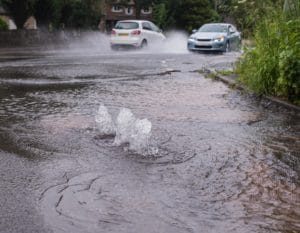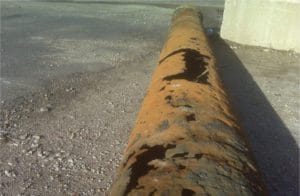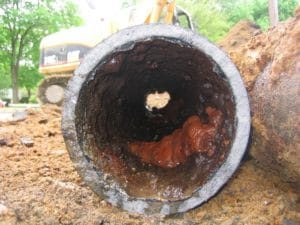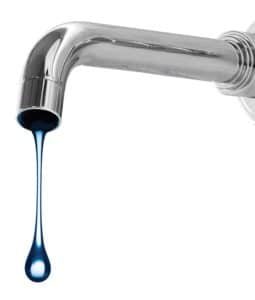
Continuing our July theme on water crises in the United States, this week’s article will dive into our nation’s deteriorating water infrastructure — and how we can fix it. America’s infrastructure is in serious trouble, especially our water systems. Although the quality of drinking water in the U.S. remains high, our aging water infrastructure can no longer be ignored. Many of the pipes are over 100 years old and are exceeding their useful life. We experience about 240,000 water main breaks each year, or one every two minutes. These breaks result in 1.7 trillion gallons of clean water wasted annually. If not replaced, these water systems are expected to cost over a trillion dollars in repairs in the coming decades and, more importantly, put people’s health at risk.
The State of Our Infrastructure

Every four years, the American Society of Civil Engineers (ASCE) develops a report card that depicts the condition and performance of American infrastructure. Our water and wastewater infrastructure both received a D grade, which is a slight improvement from the 2009 report card which ranked both water and wastewater at a D-. Despite the subtle improvement, our country has a long way to go to bring our water systems up to date and make them adequate for future demands.
We as citizens have become blind to our failing infrastructure by accepting preventable environmental hazards as the norm. Events such as polluted and toxic drinking water, floods from levee failures, lead contamination, and constant pipeline bursts have become all too common in our nation. It is apparent that there is a pressing need for modernization, reliability, and long-term funding. Despite these alarming scores and figures, we can improve the current condition of our nation’s infrastructure if we take the right steps.
What We Can Do Now

One of the best ways municipalities and water companies can improve and monitor their aging water systems is pipe testing. Testing the strength of pipes provides insight on how likely a system is to fail or leak. Pipe testing also helps to identify areas of a water system needing repairs, which can save millions of gallons of water as well as a lot of money.
Another way to assess a water system is with an annual water audit. Water audits help municipalities and water companies figure out how to address non-revenue water (NRW). NRW is water that is pumped into the system but not accounted for due to leaks, theft, customer metering inaccuracies, and other inaccurate accounting of water use. Effective water audits can reduce the need for facility upgrades and expansions, reduce the need to find additional sources, and help protect public health by reducing the number of entry points for disease‐causing pathogens.
Although pipe testing and water audits assist in monitoring and improving water systems, the real solution is long term replacement through government and legislative action. To do so, we need to accomplish three important goals:
- Increase leadership in infrastructure renewal. We need bold and compelling vision at the national level if we plan on getting anything done. A way we can make this happen is to tell our legislators to take action.
- Promote sustainability and ongoing maintenance. Our infrastructure must meet our present and future demands as challenges continue to arise. Our water system problems are not just a one time fix; we need plans in place to monitor and maintain our systems for growing future demand.
- Develop, prioritize, and fund plans to maintain and enhance our infrastructure. Once funded, infrastructure projects must be prioritized in ways that improve people’s lives and support a thriving economy. Fixing our infrastructure is going to be expensive. We need to prioritize future improvements based on the benefits and demand of the improvements so we can best serve everyone across the country. Everyone deserves clean, safe drinking water.
What to Take Away
 The truth is, there is too much at stake to keep ignoring our weakening infrastructure. If we do not do something soon, Americans may be in for some serious surprises. Imagine not being able to drink the water that comes out of our faucets or even take a shower without worrying about water borne diseases and bacteria. If we wish to seriously improve our water infrastructure, we need collaboration from all parties, both public and private. Politicians and lawmakers need to take definitive action and commit to a sustainable and reliable plan to make our water systems safe and adequate for the future. We need to make the condition of our country’s water systems a top priority.
The truth is, there is too much at stake to keep ignoring our weakening infrastructure. If we do not do something soon, Americans may be in for some serious surprises. Imagine not being able to drink the water that comes out of our faucets or even take a shower without worrying about water borne diseases and bacteria. If we wish to seriously improve our water infrastructure, we need collaboration from all parties, both public and private. Politicians and lawmakers need to take definitive action and commit to a sustainable and reliable plan to make our water systems safe and adequate for the future. We need to make the condition of our country’s water systems a top priority.
